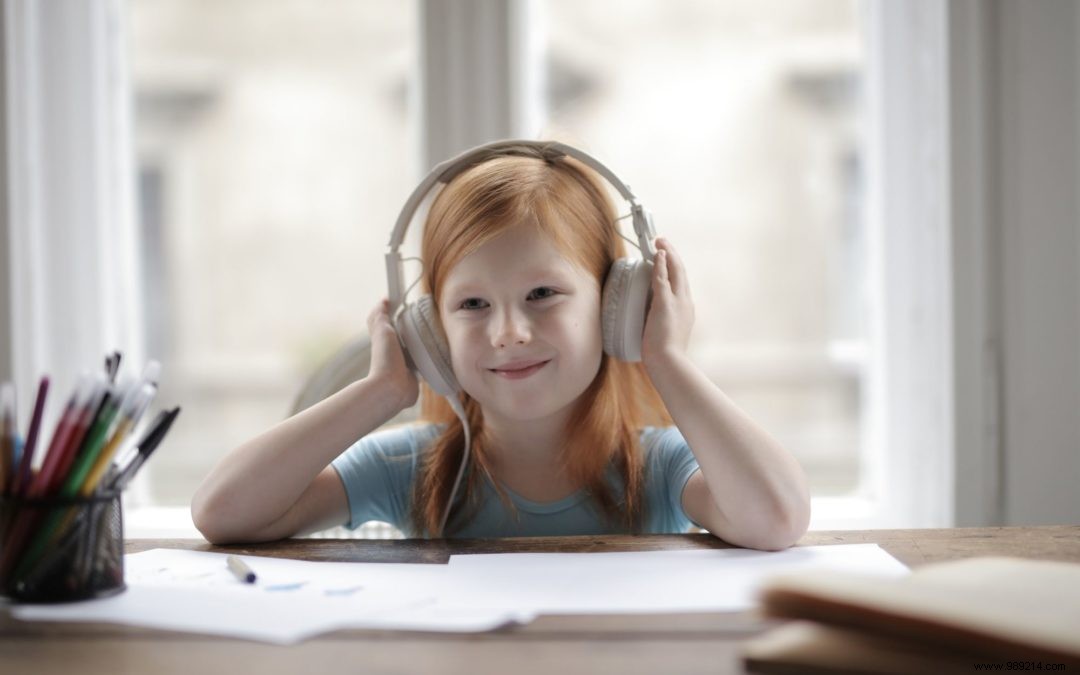
The time spent on screens is increasing among young people and the duration of listening to sound with them. The behavior of adolescents aged 15-17 is systematically pointed out, but the children are concerned, copying the brothers and sisters and the parents. However, the maturation of the auditory cortex takes place until the 6 e year of the child and in theory, the sensory cells of the ear would only begin their aging process from the age of 20. It is therefore important to preserve hearing in order to promote the proper development of this essential sense.
The cochlea is functional at 30 weeks of gestation. It contains the sensory cells of the ear; those that will transmit information to the brain via the auditory nerve. It contains only 15,000 cells in each ear. This is a unique endowment, a precious capital to be preserved when one realizes that these cells have the particularity of wearing out with advancing age or under the effect of toxic sound exposure. Once worn or damaged, these cells disappear. To date, medicine does not know how to replace them. It is therefore essential to preserve this capital at the heart of which are the mechanisms of 3 functions essential to the awakening and development of the human being:communication, alert and emotions. It is a great tool for developing your potential for health and relationships with others. Insofar as the auditory cortex (area of the brain dedicated to hearing) matures until the age of 7, it would be ideal to exploit this period to increase its richness tenfold. Auditory memory is a tremendous resource.
But current lifestyles heavily borrowed from sound exposures of all kinds tend to tire the ear. Use of earphones in toddlers to listen to videos on parent's tablet; use of headphones for long periods and at high volume in adolescents with tendencies to listen while falling asleep; all this endangers the balance of the ear of young people. In addition to the impairment risk factor related to loudness and listening time, it is also "ear fatigue" that is to be feared. Indeed, sound solicitations are a source of acoustic stress exerted on the cells of the ear. The greater this stress, the more the cells are clogged and the more information is difficult for the brain to decode. This difficulty contributes to speech comprehension problems, loss of concentration, more general stress and fatigue. It is then the ability to follow learning that can be degraded. A fortiori, when the ear gets tired, that's when tinnitus symptoms and hearing problems can occur.
Normally temporary, these effects wear off after a cooldown. But this tends to be reduced due to the presence of sound exposures both outside and inside the home.
The golden rule from the ear's point of view is to pay attention to the dose of sound exposures and the intensity of the volume. In all cases, times of sound calm are to be favored to offer recovery windows to the ears and especially during the night of sleep. It is not about pure silence which does not exist in real life but about a calm atmosphere below 30 dB. So pay attention to the resonance of the television in the apartment for example.
For the teenager, it is possible to teach him to modulate his forms of listening and to move towards the use of mobile speakers to let go of the headphones and invite him to recovery time. One way to convince him is to challenge him to test and perceive the improvement in the speed of integration of the learning of the day in college or high school. Auditory memory can be worked on and can be a great resource!
Because auditory acuity needs to be worked on and refining your hearing is also a wealth. It is then necessary to enrich the sound palette by modulating the listening of amplified sounds (sound of music on the smartphone) and natural sounds. Amplified sounds tend to impoverish the sound spectrum by stimulating the ear on a reference frequency band and reducing silences. The ear is made lazy, without breathing time Emotion is sought by the physical intensity of the sound.
In children or adolescents, it is important to integrate hearing monitoring into the medical course. Mandatory steps are recalled in the child's health record. Particular vigilance is required in the event of repeated ear infections or a form of ENT fragility (regular cold, sinusitis, etc.). Regular examinations are therefore recommended. Of course, when you perceive a lesser reaction when you drop a fork on the floor or when your child or teenager makes you repeat it, it is recommended to initiate a verification consultation.